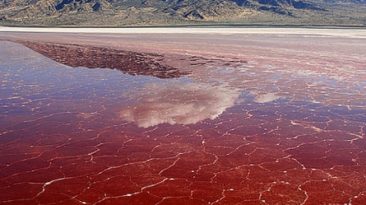This is Burj Khalifa, the tallest building in the world. This masterpiece in Dubai is twice the height of the U.S.’s Empire State Building. And it’s almost three times the size of the Eiffel Tower. So what if you took a tumble from the top?
How could you slow your fall? Would anybody be able to catch you on the ground? Why does the G-force matter?
If you fell three stories, your chance of dying would be 50%. If you fell more than 10 stories, you’d have a very slim chance of surviving.
The Burj Khalifa is 160 stories high. And now you’re falling off of it. That would be a long way down. But a longer distance means you’d have more time to react. Would there be anything you could do to save yourself?
The reason you plummet to the ground when you fall off a building is because of gravity. Everything in the Universe has gravity. Even you.
And since gravity increases with mass, the Earth has a larger gravitational force than you do. So you’re falling toward the center of the Earth, but you don’t fall at a constant speed.
The pull of Earth’s gravity makes you accelerate every second that you’re free falling. That is, until you reach the maximum speed of your fall, called the terminal velocity. Then, the air resistance will push back against Earth’s gravity. You’d still be falling, but you’d stop accelerating. And it’s essential to know about terminal velocity because it might just save your life.
When skydivers want to fall fast, they pull in their arms and legs to make themselves as small as possible. In this position, they can reach a maxiumum speed of 290 km/h (180 mph).
But if you want to slow your fall, you’d stretch your arms and legs. This would create more drag and more air resistance. When skydivers do this, they can slow their maximum speed to 200 km/h (120 mph).
But you’re not a skydiver, so you’d probably reach a terminal velocity of about 240 km/h (150 mph) after 5.7 seconds of your fall. And for the next 12 seconds, you’d be plummeting toward the ground at 240 km/h (150 mph). That’s faster than your car goes on a highway.
And it’s not the speed alone that would kill you when you hit the ground. The real killer is how fast you’d go from traveling at high velocity to a standstill. OK, let’s talk physics. G-force is the force of acceleration on your body. The quicker you go from a high velocity to no velocity, the stronger the G-force you’d experience.
While you’re falling through the air, you’d feel the force of 1 g, as 1 g is equal to the acceleration caused by Earth’s gravity. But when you suddenly stop falling because you hit the ground, you wouldn’t have any time to decelerate. That instant change from high to low velocity would create a g-force stronger than your body could take.
This is why landing on a soft surface increases your chance of survival. If you land in snow or fall through some trees, it would slow your descent, increasing your stopping time. And that would lower the G-force, meaning less damage to you. But it doesn’t snow in Dubai, and the only trees around are palm trees. They don’t have enough branches to slow your fall.
And even if someone caught you, they’d only slow your fall by 0.06 seconds. That wouldn’t be enough to save you. But it would seriously hurt the person catching you.
So if you have a long way to fall, like off the top of the Burj Khalifa, there would be no way you could land safely.
Sources
- “Did You Know? Facts & Figures About The Burj Khalifa | Burj Khalifa”. 2021. burjkhalifa.ae.
- “Burj Khalifa: The Tallest Building In The World”. 2021. Guinness World Records.
- “Man dies after fall from world’s tallest building”. constructionweekonline.com
- “‘Thank God For The Miracle:’ Man Who Survived 47-Story Fall From NYC Skyscraper Recounts Story”. 2019. Fox News.
- “Curious Kids: how does gravity pull things down to Earth?”. Monica Grady. 2018. The Conversation.
- “Speed Skydiving”. 2017. fai.org.



























